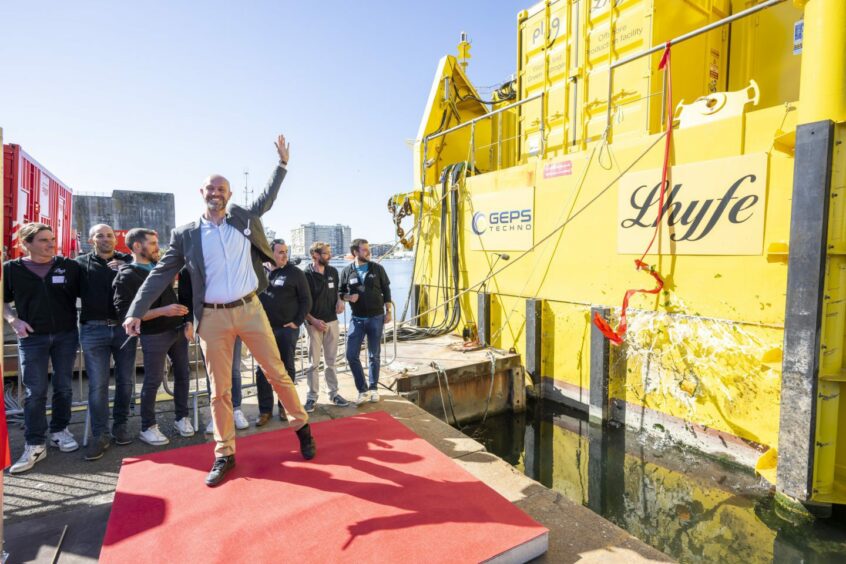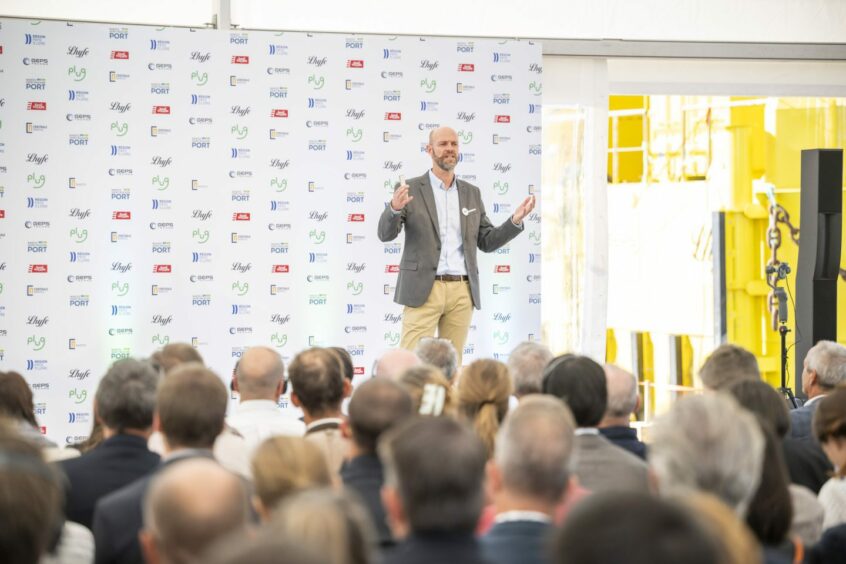
French hydrogen company, Lhyfe, cracked a bottle of champagne over the “world’s first” offshore hydrogen platform.
Set to produce green hydrogen, the platform will receive all of its power from a nearby offshore wind farm.
Launching from Saint-Nazaire on the west coast of France the “Sealhyfe” platform is starting an 18-month experimental period at quay then off the coast of Le Croisic, on an offshore testing site operated by French engineering school Centrale Nantes.
Together with its partner, Plug Power, Lhyfe developed the first electrolyser capable of operating on a floating platform.
Lhyfe first perfected the act of producing hydrogen from seawater at its Bouin-based onshore facility.
Here sea water is pumped into the plant and purified before being broken down into H2 (hydrogen) and oxygen.
This site is also powered by wind, in this instance, power is received from nearby, onshore, turbines.
This site currently produces 300kg of H2 per day and sells its product to a nearby petrol station for fuelling hydrogen cars and busses, a Lidl supermarket to power forklifts, and other as yet undisclosed buyers.
Out of Putin’s Pocket
At the offshore platform’s inauguration, Lhyfe chief executive, Matthieu Guesné said: “Putin has the price of electricity and gas in his hands.”
Guesné went on to explain the importance of reducing France’s energy imports, something the UK can relate to as prices skyrocket.
The Lhyfe boss claimed that despite France only taking responsibility for 4% of Europe’s maritime space, if used for hydrogen production the country would produce enough to replace Russian gas.
Technical direction, strategic partnerships at Lhyfe, Thomas Créach said: “The demonstrator is only the first step to prove what we can do.”
Life aims to produce 3GW of hydrogen energy by 2030.
The region that the Sealhyfe is set to dock from looks to become a leading producer of hydrogen.
At the inauguration, it was explained that the town of Saint-Nazaire is one built on industry and the region hopes to use hydrogen production to create new jobs.
Guesné also added: “At Lhyfe, we have only one aim: to leave a more breathable planet for our children. This is why we once again wanted to take up a major technological challenge, to prove – by producing hydrogen at sea for the first time – that it is possible to do it as of today. By paving the way for the mass production of renewable hydrogen at sea, Sealhyfe is fully in line with the EU’s strategy to deploy an offshore hydrogen chain, and wishes to help build the energy sovereignty of countries.”
Bringing the UK to Lhyfe
The French company recently expanded to the UK, setting up shop in Newcastle.
This new team will be led by Colin Brown, a geordie that is passionate to bring hydrogen energy to his home town.
When asked if Lhyfe’s offshore hydrogen technology could be used in the UK, he said: “This [Saint-Nazaire] is where renewable electrolysis offshore starts but you can’t just jump from nothing to a huge platform, you’ve got to start somewhere.
“If you’re looking in the UK, the amount of offshore generation potential and the number of offshore wind farms that are currently in development in the UK, they can’t all be grid connected so we need to get as much green electricity onto the grid as we can but we can also use what’s not on the grid to produce green hydrogen.”
Recommended for you


 © Supplied by Lhyfe
© Supplied by Lhyfe